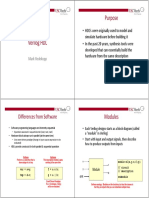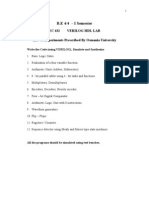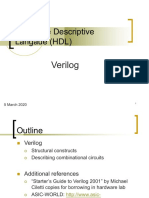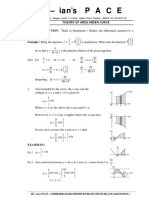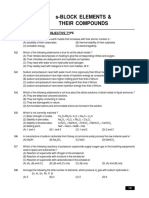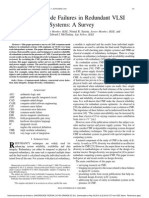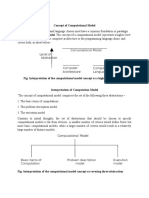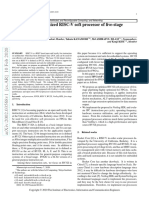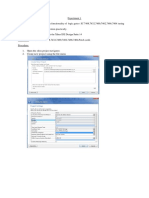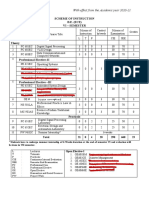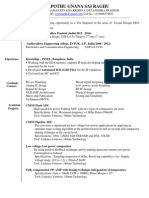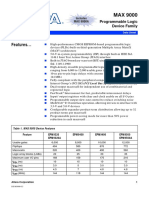0% found this document useful (0 votes)
44 views45 pagesFpga IITK
This document provides an introduction to field programmable gate arrays (FPGAs). It discusses the need for hardware description languages (HDLs) like Verilog to design circuits with hundreds of millions of gates. An FPGA allows a design created using an HDL to be uploaded and tested before production. The document provides examples of coding in Verilog, including defining modules, ports, drivers, and using always blocks and sensitivity lists to model sequential and combinational logic. It recommends starting with simple Verilog examples and testing designs on hobbyist-friendly FPGA boards.
Uploaded by
Priyanshu SilCopyright
© © All Rights Reserved
We take content rights seriously. If you suspect this is your content, claim it here.
Available Formats
Download as PDF, TXT or read online on Scribd
0% found this document useful (0 votes)
44 views45 pagesFpga IITK
This document provides an introduction to field programmable gate arrays (FPGAs). It discusses the need for hardware description languages (HDLs) like Verilog to design circuits with hundreds of millions of gates. An FPGA allows a design created using an HDL to be uploaded and tested before production. The document provides examples of coding in Verilog, including defining modules, ports, drivers, and using always blocks and sensitivity lists to model sequential and combinational logic. It recommends starting with simple Verilog examples and testing designs on hobbyist-friendly FPGA boards.
Uploaded by
Priyanshu SilCopyright
© © All Rights Reserved
We take content rights seriously. If you suspect this is your content, claim it here.
Available Formats
Download as PDF, TXT or read online on Scribd
/ 45



